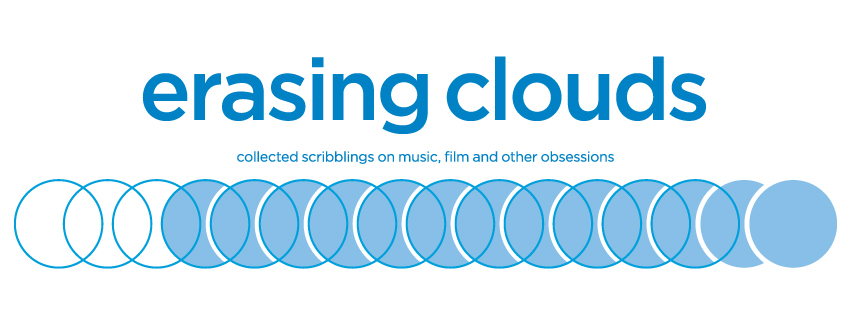No genre limitations. Listed without comment. Decided on after much consideration and reconsideration. I love these albums and wish I had the time in 2014 to write about more than a handful of them. I feel the need to get these down on paper, for myself if no one else, so I can move on with my life...
Note: links go to videos, reviews, the album itself for download, etc.
96. EDJ, EDJ (Easy Sound)
95. Circulatory System, Mosaics Within Mosaics (Cloud)
94. The Royal Landscaping Society, The Royal Landscaping Society (Beko)
93. Lecrae, Anomaly (Reach)
92. The Hobbes Fanclub, Up at Lagrange (Shelflife)
91. Zammuto, Anchor (Temporary Residence)
90. Ray Price, Beauty Is...The Final Sessions (AmeriMonte)
89. Circus Devils, Escape (Happy Jack)
88. The Steinbecks, Kick to Kick With the Steinbecks (Matinee)
87. Soft Science, Detour (Test Pattern)
86. Archibald Slim, He's Drunk! (Awful)
85. Marty Stuart and His Fabulous Superlatives, Saturday Night/Sunday Morning (Superlatone)
84. Virginia Wing, Measures of Joy (Fire)
83. Your Friend, Jekyll/Hyde EP (Domino)
82. Tinniens, Dub Guns (Geographic North)
81. Pharoahe Monch, P.T.S.D. (W.A.R.)
80. Shabazz Palaces, Lese Majesty (Sub Pop)
79. Ambrose Akinmusire, The Imagined Savior Is Far Easier to Paint (Blue Note)
78. Carla Bozulich, Boy (Constellation)
77. Alpaca Sports, Sealed With a Kiss (Luxury)
76. Stanley Brinks and the Wave Pictures, Gin (Fika)
75.Andrew Bird, Things Are Really Great Here...Sort Of (Wegawam)
74. The Popguns, Pop Fiction (Matinee)
73. Georgia Anne Muldrow, Oligarchy Sucks (Some Otha Ship)
72. Set in Sand, What Is This Place (Audio Dregs)
71. Dierks Bentley, Riser (Capitol)
70. PRhyme, PRhyme (PRhyme)
69. Mobb Deep, The Infamous Mobb Deep (Infamous)
68. Amen Dunes, Love (Sacred Bones)
67. Taken By Savages, Taken By Savages (Self-released)
66. Taylor McFerrin, Early Riser (Brainfeeder)
65. Ultimate Painting, Ultimate Painting (Trouble in Mind)
64. Generationals, Alix (Polyvinyl)
63. YG, My Krazy Life (Def Jam)
62. Prince, Art Official Age (Warner Bros)
61. Willie Nelson, Band of Brothers (Legacy)
60. Anthony Atkinson and the Running Mates, Broken Folks (Lost and Lonesome)
59. Dragon Turtle, Distances (Oscillating Color)
58. Umbra Sum, Aún no has demostrado nada (Acuarela)
57. Cosines, Oscillations (Fika)
56. Sunny Sweeney, Provoked (Thirty Tigers)
55. The Wendy Darlings, The Insufferable Fatigues of Idleness (OddBox)
54. Lewis & Clarke, Triumvirate (La Société Expéditionnaire)
53. Flying Lotus, You're Dead (Warp)
52. Should, The Great Pretend (Words on Music)
51. One Happy Island, Your Flaws Aren't Picturesque (weePop!)
50. Ben and Ellen Harper, Childhood Home (Prestige Folklore)
49. Landlady, Upright Behavior (Hometapes)
48. Guided by Voices, Motivational Jumpsuit (GBV Inc)
47. Bear in Heaven, Time Is Over One Day Old (Dead Oceans)
46. The Pains of Being Pure At Heart, Days of Abandon (Yebo)
45. Leonard Cohen, Popular Problems (Columbia)
44. Withered Hand, New Gods (Slumberland)
43. Steve Gunn, Way Out Weather (Paradise of Bachelors)
42. Toni Braxton & Babyface, Love, Marriage and Divorce (Motown)
41. Mick Jenkins, The Water(s) (Cinematic)
40. The Luxembourg Signal, Distant Drive (Shelflife)
39. Alvvays, Alvvays (Polyvinyl)
38. Literature, Chorus (Slumberland)
37. Rome Fortune, Beautiful Pimp II (self-released)
36. The Zebras, Siesta (Jigsaw/Lost and Lonesome)
35. clipping, CLPPNG (Sub Pop)
34. Let's Whisper, As Close As We Are (weePop!)
33. Melbourne Cans, Moonlight Malaise (Lost and Lonesome)
32. Jerry David DeCicca, Understanding Land (self-released)
31. Pattern Is Movement, Pattern Is Movement (Hometapes)
30. Jason Anderson, Cold Cold Rain (self-released)
29. Jennifer Castle, Pink City (No Quarter)
28. Schoolboy Q, Oxymoron (Top Dawg/Interscope)
27. Brian Blade and the Fellowship Band, Landmarks (Blue Note)
26. J Cole, 2014 Forest Hills Drive (Dreamville/Roc Nation)
25. Sun Kil Moon, Benji (Caldo Verde)
24. Lee Ann Womack, The Way I'm Livin' (Sugar Hill)
23. A Sunny Day in Glasgow, Sea When Absent (Lefse)
22. Big K.R.I.T., Cadillactica (Def Jam)
21. Hallelujah the Hills, Have You Ever Done Something Evil? (self-released)
20. Jenny Lewis, The Voyager (Warner Bros)
19. Auburn Lull, Hiber (Geographic North)
18. Greg Gives Peter Space, Greg Gives Peter Space (Erased Tapes)
17. Haley Bonar, Last War (Graveface)
16. The Rosebuds, Sand + Silence (Western Vinyl)
15. Angaleena Presley, American Middle Class (Slate Creek)
14. Architecture in Helsinki, Now + 4eva (Casual Workout)
13. Benjamin Shaw, Goodbye, Cagoule World (Audio Antihero)
12. The Caribbean, Moon Sickness (Hometapes)
11. Nicholas Krgovich, On Sunset (Tin Angel)
10. Common, Nobody's Smiling (Def Jam)
9. Allo Darlin, We Come From the Same Place (Slumberland)
8. Fear of Men, Loom (Kanine)
7. Bitchin Bajas, Bitchin Bajas (Drag City)
6. Father, Young Hot Ebony (Awful)
5. The Iceypoles, My World Was Made for You (Lost and Lonesome)
4. Freddie Gibbs and Madlib, Piñata (Stones Throw)
3. Sylvan Esso, Sylvan Esso (Partisan)
2. Taylor Swift, 1989 (Big Machine)
1. The Happy Couple, Into the Woods (Felicite)




.jpg)


